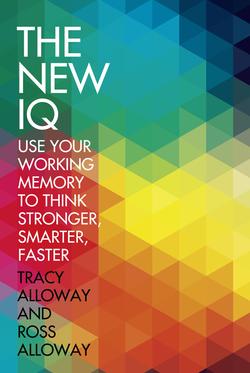Читать книгу The New IQ: Use Your Working Memory to Think Stronger, Smarter, Faster - Tracy Alloway - Страница 12
Working Memory as a Conductor
ОглавлениеYou can think of working memory as your brain’s Conductor. A conductor of music brings all the different instruments of an orchestra under control. Without the conductor, the result is a cacophony: the piccolo might tweet when the piano was supposed to play or the violins might be drowned out by a thundering percussion section. When the conductor walks out on the stage, chaos is brought to order.
In a similar way, your working memory gives you the advantage of control over the daily information onslaught: the emails, the ringing phones, the schedule that is constantly changing, the new math lesson that must be learned, your friend’s disheartening Facebook update, the Twitter updates, the presentation that must be rapidly assembled for a potential client. In this ocean of information, where everything seems to be equally important, your working memory Conductor has two main functions:
1 It prioritizes and processes information, allowing you to ignore what is irrelevant and work with what is important.
2 It holds on to information so you can work with it.
Throughout this book, we occasionally refer to working memory as the Conductor, or the working memory Conductor, when discussing these functions.
For an illustration of how the working memory Conductor can give you an advantage at work, imagine for a moment that you are Mark, a middle manager in Microsoft’s Tablet PC division, and the Tablet has been taking a beating from the iPad 700, which projects holograms. iPad 700 users love seeing their pictures and spreadsheets in three dimensions. You’re called to a meeting where an inventor takes out a tablet called the FeelPad that can give holograms mass. FeelPad users can project images that can be touched and felt, not just seen. You are truly amazed. And because you are lower down the pecking order, you can just sit back and be enthralled because no one ever asks you a question at these meetings. Until today.
Bill Gates turns and looks directly at you. “Mark, will this give our tablet an edge?”
It is at this moment that you realize Gates mistakenly thinks you are the product manager. Your amygdala, the emotional heart of your brain, surges with terror. You can correct him, but then you know your career won’t go anywhere. Or you can go with the flow and see where it leads. The Conductor takes over, and you decide to take a risk. Because you don’t know much about the FeelPad’s technology, you have to work with what you have just heard and cobble together an answer that combines the key features of the technology and how you think it will fit into the marketplace.
“Well,” you say, “I think that the brand recognition of the iPad 700 is so formidable that it will mean considerable financial investment to make a dent in Apple’s sales, but if the FeelPad can really make projections come to life, we may have a real iPad killer on our hands.”
“Great,” says Bill. “Apple wants to look at the technology too, and the inventor is giving us one day to make an offer. You have ten minutes to decide if we need to buy it.”
Ten minutes? You go back to your cubicle to formulate a plan. That isn’t enough time to come up with a detailed proposal, but it is enough time to assemble the most important technological information, market analyses, programming issues, and budget projections. Shutting out the ringing phone, the blinking email notice, and the low-level chatter, you modify a product launch plan with which you are already familiar and show that with the right software and viral marketing programs, the FeelPad can crush the iPad 700. Bill likes your plan so much that he makes you the project manager, and within a year, the FeelPad single-handedly turns around Microsoft’s fortunes and you are promoted to vice president of new product development. Congratulations!
This remarkable change of fortune is a consequence of your Conductor working at optimum levels. It allowed you to pull out relevant information that you already knew, like product launch plans, and allowed you to synthesize it with the potential requirements of the new device. It also kept you on task and blocked distracting information, such as the ringing phone, the office chatter, and the surging fear that you may blow this opportunity. It allowed you to keep in mind the hardware, software, and finance data. It also allowed you to hold on to the information long enough to structure your plan.
